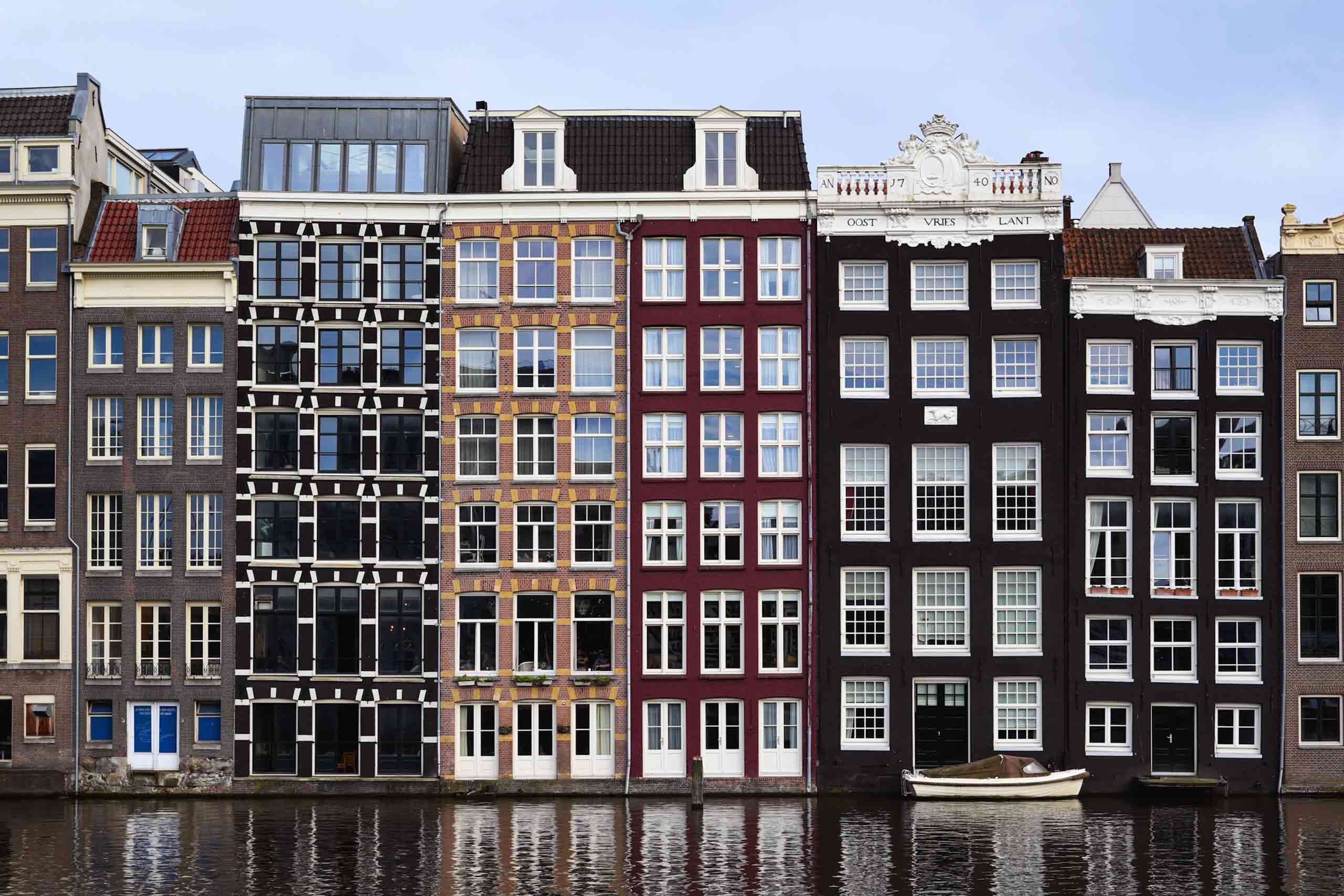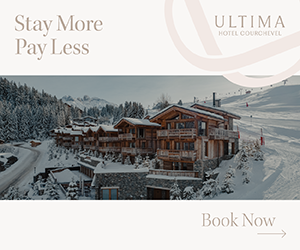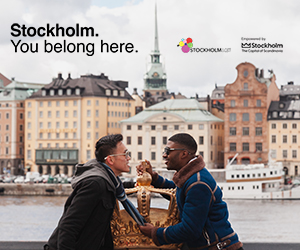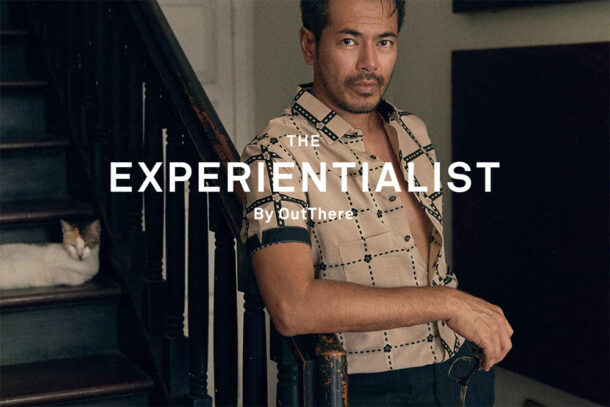With a name like Badass Tours Amsterdam, you’re not exactly trying to communicate that you’re like everyone else. And this walking tour company, which offers exclusive tours centred around showcasing the rich, enlightening – and often little-known – stories of the city’s diverse communities throughout the ages, certainly isn’t.
Beneath the cobbled pavements and trodden paths of many of the world’s most heavily touristed destinations lies a wealth of stories forgotten by the majority of those who wander them. When travelling, we often head for the obvious: the iconic figures (both good and bad, and everything in between) who have left their marks on the world, the long-established institutions and museums displaying exhibits of immeasurable value, and the many attractions aimed at tourists in search of a ‘good time’. But for returning visitors, or those looking for stimulation of another kind, the history of individual figures rendered invisible by time frequently remains inaccessible, untranslated or merely overshadowed.
When Elyzabeth Gorman left NYC for Amsterdam, she found that though the Dutch city had a strong ‘storytelling scene’, there were stories that would benefit from getting brought back and told once more – and both locals and visitors, who stood to benefit from hearing them. That’s how, in 2017, Badass Tours Amsterdam was started. Eight years down the line, the company still upholds its core belief that it’s through learning about history that we can understand how we got to where we are, and that knowing the past can help us build a future that’s inclusive of all.
Admirably, Badass Tours Amsterdam is a great example of what an inclusive present can look like, as a member of IGLTA (the International LGBTQ+ Travel Association), the world’s leading network of queer-welcoming tourism businesses, and through its work with Able Amsterdam, which has helped the walking tour company create experiences that are accessible to all. With so much going for them, we wanted to find out more about Badass Tours Amsterdam, and hear not only from its founder, but the passionate guides offering tours around everything from LGBTQ+ life and Jewish history to BIPOC communities and women’s rights… and who ensure that no story is forgotten.
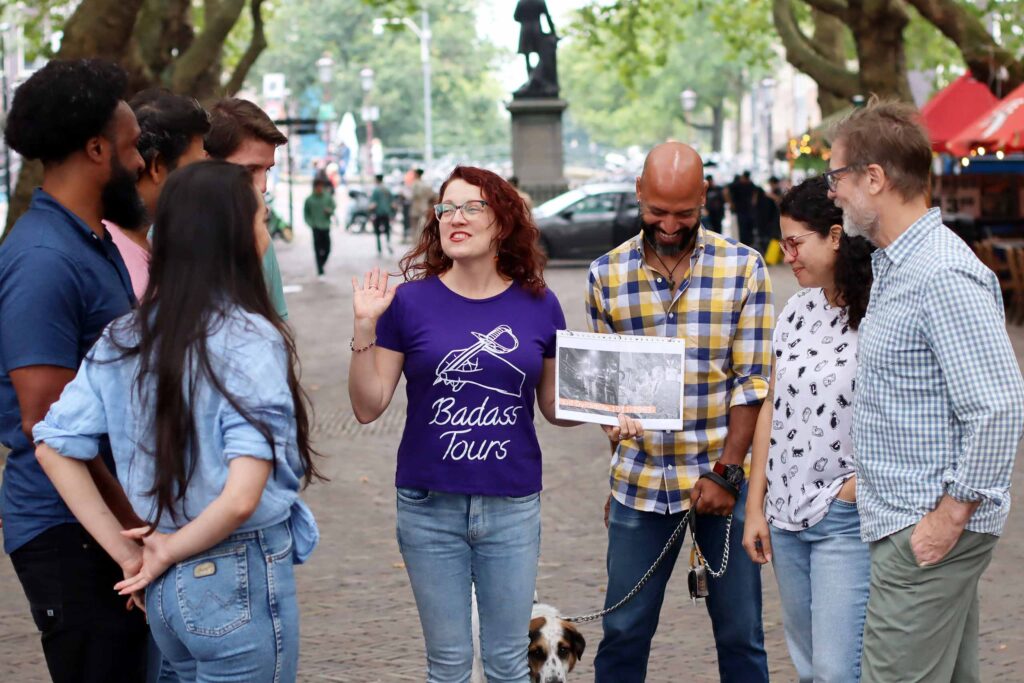
Elyzabeth, how did you decide to start Badass Tours and what did you do before?
I used to work in New York theatre, where I researched and wrote about women in history. When I moved to Amsterdam, I discovered two things: the storytelling scene and all this amazing history. While I was researching Amsterdam’s BIPOC, LGBTQ+ and women’s history, I was performing their stories in storytelling venues across the country. The result was Badass Tours Amsterdam, which uses the stories of people to inspire guests and get them to engage with untold history. Our guides are storytellers with a wide range of backgrounds and interests, which makes every tour unique.
What tours do you offer?
Our group tours include a Women’s History Tour, LGBTQ+ History Tour, Jewish History Tour, and Hidden Gems Tour, which covers BIPOC, Jewish, LGBTQ+, and women’s history. These tours are all intersectional, so each one includes subjects from across these lines of history. Our private, customised tours cover anything people are interested in. Recent ones include financial history, Black history before the 20th century, and American connections.
We also work with museums and cultural institutions, sometimes for tours and sometimes for storytelling events. The City Archive asked us to create women-centred tours of their medieval history exhibit. Likewise, the Holland Festival commissioned walking tours focused on 17th-century women to complement their opera about a woman who fought for independence in the 1600s.
My favourite event of the past few months was an hour-long performance about Dutch artist and designer Benno Premsela, who I believe turned the tide toward the world’s first gay marriage. We were commissioned by the Holocaust Museum, so we had full access to their research centre. After going through hours of footage, articles, books and letters, I have to say he is one of the most impressive people I’ve ever read about. I’m proud that we’re making sure more people know his story. Benno features on every tour except for women’s history!
Asking the team: who are the people that book your tours – do you find that they are particularly popular with visitors from diverse backgrounds, or does the wider public take an interest in finding out more about diverse Amsterdam, as well?
Guus: While it’s usually queer people who book my tour, I also often find families of queer people, and even members of the public who are simply looking to expand their view of Amsterdam, are on the tours as well. It’s very gratifying to see both audiences, because it’s clearly meaningful to them, even if for different reasons.
Astrid: My Hidden Gems tours are mostly, but not exclusively, booked by women. Noticeably, people who work for governmental institutions are also interested, which makes sense given DEI (Diversity, Equity and Inclusion) is being advocated in governmental bodies. I also host school classes and queer people as well as people who are active feminists.
Tanja: Up until recently, I was mostly giving tours to tourists visiting the city, and often they had a personal connection to the tours they had chosen. For example, I led a queer couple on our Rijksmuseum Shifting the Frame tour and an American Jewish family on our Jewish Heritage tour when they visited Amsterdam for New Year’s Eve. However, lately I have also had local residents from all backgrounds attending walking tours, as they want to know more about the city they live in. I particularly love this because there is a genuine interest in getting more familiar with one’s direct surroundings. This doesn’t happen much in this busy life of ours, so I feel touched that they take time to do this. Plus, they occasionally have some knowledge of their own about Amsterdam already, which enables a wonderful exchange of knowledge.
Elyzabeth: I’ve been really happy that more and more locals are booking our tours. In the beginning, it was usually tourists with some connection to the tour topic. It seems like word is going around that we’re doing something different. With queer history, for example, we’re proud that we go back to the Middle Ages when most tours talk about us like we popped into existence around 1950.
What are some highlights from some of your tours? Are there any particular places of interest that you’re especially proud to share with visitors?
Guus: I always like the last spot of the Queer Tour exactly because it’s not immediately visible what we’re there to see. It’s the outline of the old guard tower set in the cobblestones of the street, which you’d never notice unless someone pointed it out to you. I like this because it’s kind of the same with queer history: it’s there, you just have to be told about it.
Rissa: A highlight on our Women’s History Tour is definitely the Begijnhof. Established back in the 14th century, the Begijnhof is a serene garden courtyard surrounded by gabled houses. Its original intention was to offer the Catholic religious order of the beguines the option to live independently of a husband and children without becoming a nun. The alteration in 1578 meant properties owned by the Catholic Church were given over to the Protestants. But the beguines were able to keep their houses because the women themselves owned them through their independent wealth, and through the work they did in the city. They were even able to stop the Protestants from coming into the Begijnhof to take the Catholic church inside (now officially Protestant) for a few decades by simply locking the door 24/7! Today, the Begijnhof stands as a testament to those women’s bravery and independence. The fact that the city recognises it and makes its history readily available to everyone who stumbles upon it makes me incredibly proud.
Tanja: On our tours, I’m particularly drawn to stories of people who were perhaps overlooked or written out of history until recently because of their gender. For example, this includes people like Rosa Manus, Judith Leyster, Rachel Ruysch, and Roosje Vos.
Elyzabeth: I love our story of a lesbian love triangle in the 17th-century theatre world because I could walk into any theatre in Amsterdam or New York City today and find the exact same situation.
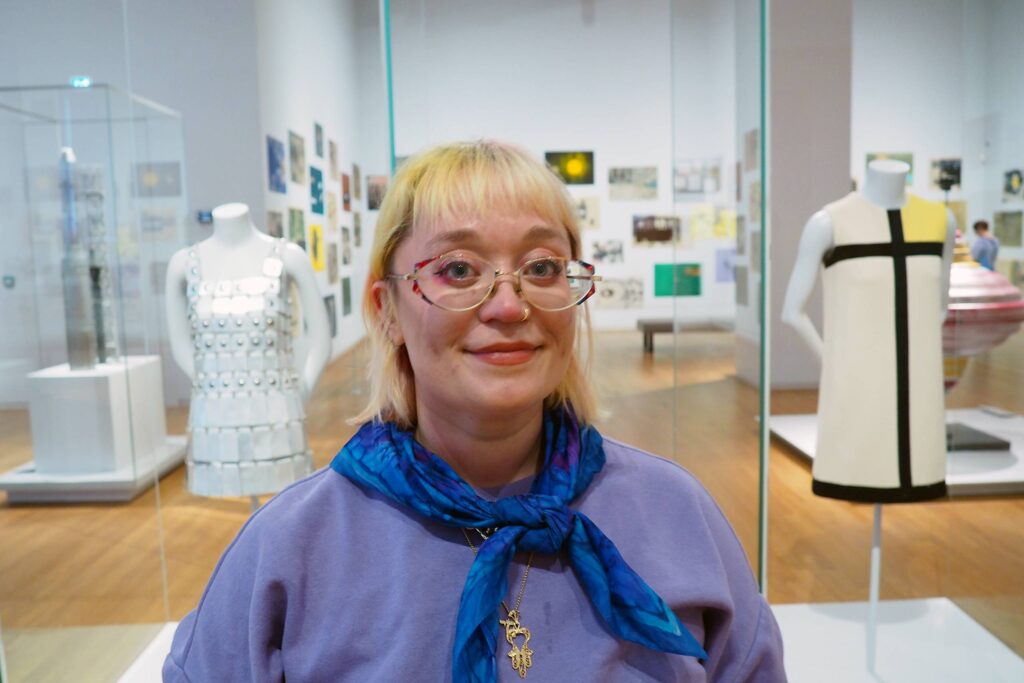
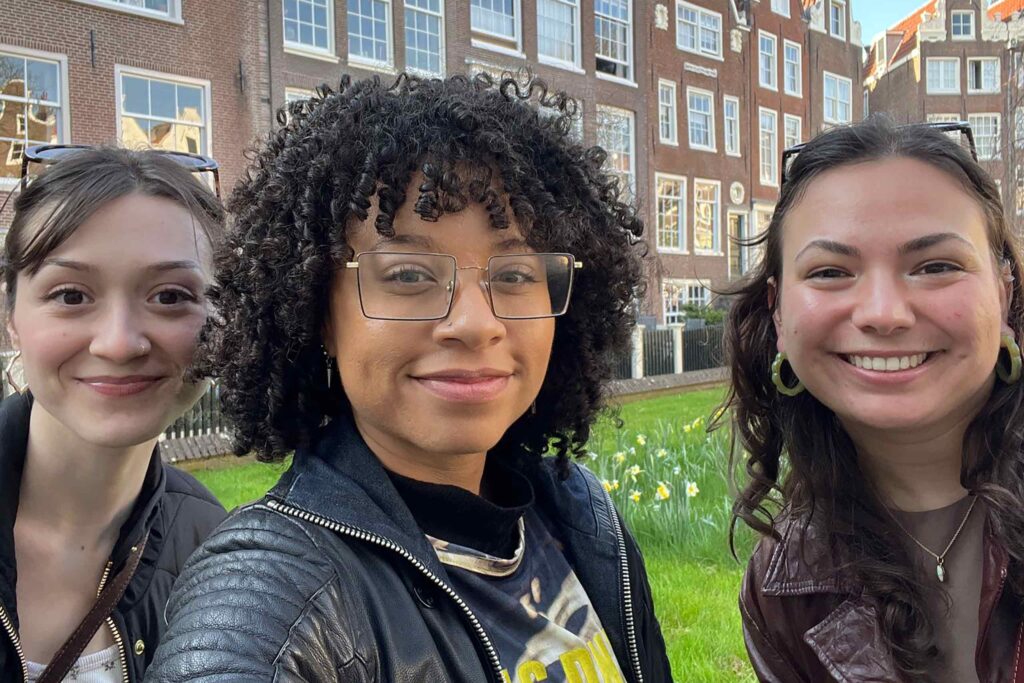
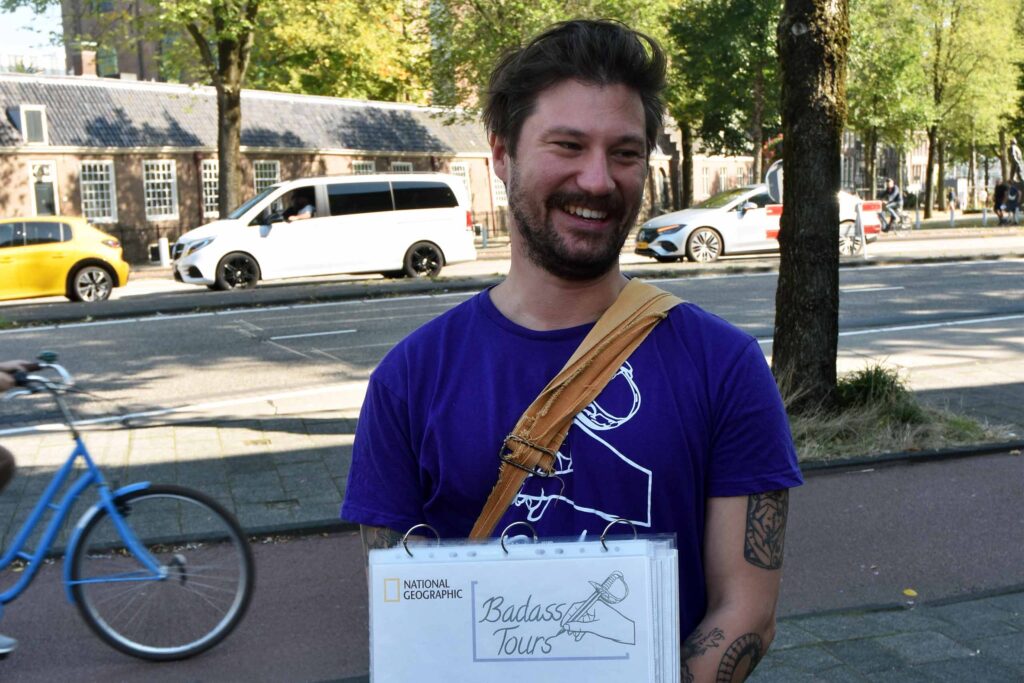
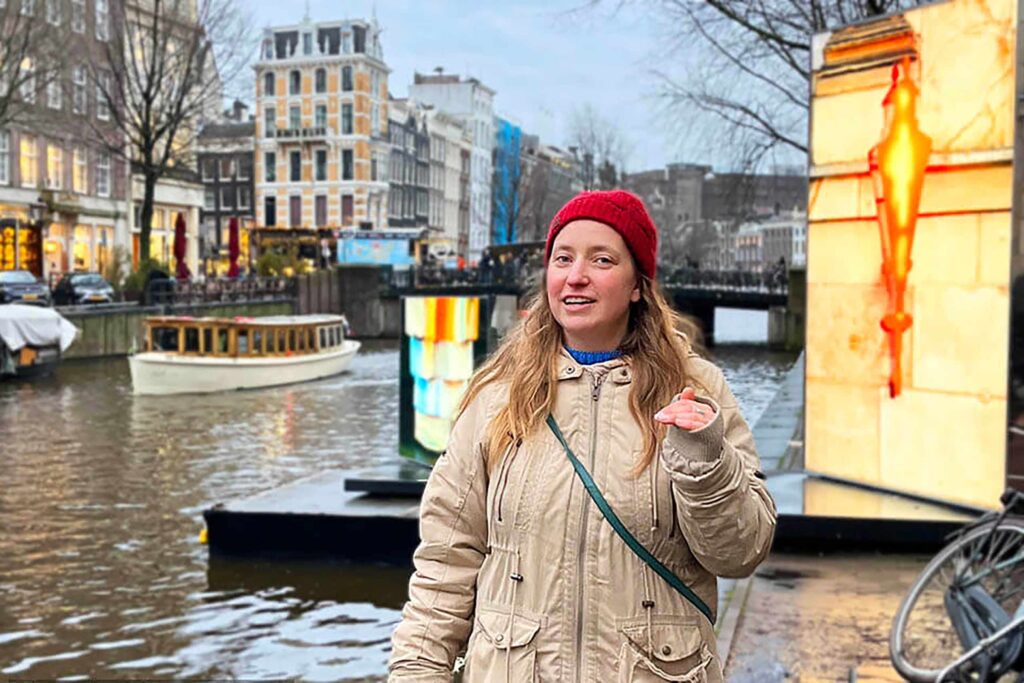
Much of the history of people from diverse backgrounds is informed by the challenges they faced, and even the threats to their lives made by the discriminatory societies they lived in. How do you strike the balance between honouring the past and celebrating Amsterdam as the open-minded and welcoming city it is today?
Guus: The question is predicated on the exact myth that we try to dispel with the queer tour, that our history is solely horrific, and our present is open-minded and welcoming. It’s true that the first gay marriage in 2001 was an important moment in queer history, but when you hear about lesbian poets living their sexuality openly in the 17th century, or a trans man finding his way in 18th-century Netherlands, it challenges this simplistic view of history that the past was bad and the present is good.
Astrid: We are clear about the context in which these things happened: what came before and what came after. And how it was progressive then, but not inclusive enough from today’s perspective.
Tanja: We know only fragments of history. We know what was written down and the narratives that people with some influence and power wanted to share. I think that the past and the present are messy and joyous and confronting and terrible and beautiful, just like the people. When you say “history”, how far are you looking? We know of Machiel van Handwerpen, born in 1719, who was assigned female at birth, lived his life as a man with a wife and family, and was buried with his strongly Catholic family, a sure sign of acceptance and love.
What is great about our tours is that we talk about certain difficult histories with people at the centre. Their struggle, the perseverance for justice and equality, is the reason that Amsterdam has progressed to where it is today.
Elyzabeth: I’m sorry, but I have to disagree with the premise of the question. Amsterdam has had moments of incredible liberation throughout its history. When England, France, Spain, and Germany were murdering each other over religion, Amsterdam was a place where people could openly practice a whole range of faiths. There were times that were more homophobic, but there were also times when queer networks flourished. The difference now – and it’s a really important one – is legal protection for LGBTQIA+ people.
Is there something about local history most visitors still don’t know about, and really should?
Astrid: The first same-sex marriage. Diversity in restaurants. Freedom of religion, though this place is not always fully welcoming towards other religions. Invited migration including Chinese sailors in the early 20th century and later Turkish and Moroccan workers.
Tanja: Prior to the Second World War, the Jewish community in Amsterdam was a prominent thread in the city for centuries; 1 in 10 locals were Jewish when the Nazis invaded. During the Holocaust, 90% of the Jewish population in Amsterdam was killed. Many Dutch people want to believe that their relatives were part of the resistance, but this could not be and was not so. Facing up to a difficult past of collaboration and passivity means we are less likely to repeat it.
Elyzabeth: Our queer history goes back to the Middle Ages. There were Black Amsterdam locals in the 1500s and Asian ones in the 1600s. Women played an important role in many financial, political, and cultural changes.
What has been the most rewarding part of being a guide with Badass Tours Amsterdam?
Guus: The responses from the audience and seeing how important it is for them to hear these stories.
Astrid: Getting to share knowledge about topics we care about with guests from all over the world.
Rissa: The most rewarding part about being a guide is getting to share the stories of some of the most influential figures in the Netherlands that no one knows the name of. Take Elisabeth Samson, for example. She was born to two freed black people and became one of the richest women in Suriname. She was a forerunner in legalising interracial marriage in the Netherlands, yet her story disappeared within a generation, despite there being official government documentation about her wealth and personal history.
Hemingway said that “every man has two deaths, when he is buried in the ground and the last time someone says his name. In some ways, men can be immortal”. Remember, we’re in Amsterdam! A city where visitors and locals alike are able to walk the streets every day and be reminded of Rembrandt and Johan Cruyff. As guides, we are given the perfect opportunity to fill the gaps in collective memory by speaking the names of those whose stories have been forgotten.
Tanja: With Badass Tours, we tell stories of real people who lived in Amsterdam, who they were and how they contributed to and impacted the city. This way of sharing history really connects with people on an individual, emotional level. For me, as a guide and an educator, there is nothing more amazing than seeing and feeling an audience that is engaged and curious about the subjects you also feel passionately about.
Elyzabeth: I learn so much from my guests and guides about the stories we tell. Their questions and responses to each figure change how I think about them. And I’m so grateful that guests reach out to us months later because they’re still thinking about the stories from our tours.
With parts of the world backtracking on LGBTQ+ rights and xenophobia continuing to feel present from North America to Europe, how do you feel about Amsterdam’s outlook on diversity and inclusion – is the city pushing forward and making strides towards being a welcoming and safe place for visitors and locals?
Astrid: We are a city that advocates being a welcoming place for everyone, and there are many spaces and festivals and aid projects. But we also think we are doing well (which indeed we are, when compared to some places in the world), so we have developed a blind spot, and this has led to, at the very least, stagnation. We’re no longer making an effort to keep it a welcoming place now and for the future. More policies and hands-on efforts should be made to ensure this isn’t forgotten.
Tanja: Current-day Amsterdam has progressed so much in the past couple of generations. It is a wonderful place to live as a queer person from a Jewish background. I feel very privileged and safe to live here, considering the situation of the world in general. The freedom to discuss, debate, and simply be is wonderful. However, in my opinion, while we are strides ahead of many places, we as a society need to move past simple tolerance and towards acceptance and inclusion of all.
Elyzabeth: I’m biased because I love this city. In my experience, however, there are so many advocacy groups and community spaces that get support and funding from the wider Amsterdam community and government. Amsterdam’s major cultural institutions are actively reaching out to underrepresented people and searching for ways to serve everyone. Nowhere is entirely safe, but Amsterdam remains a welcoming place for people across the LGBTQIA+ community, with many queer spaces and widespread acceptance.
Photography by Evelina Kvartunaite, Tuaca Kelly, Lisanne Pauw, via Unsplash and courtesy of Badass Tours Amsterdam


